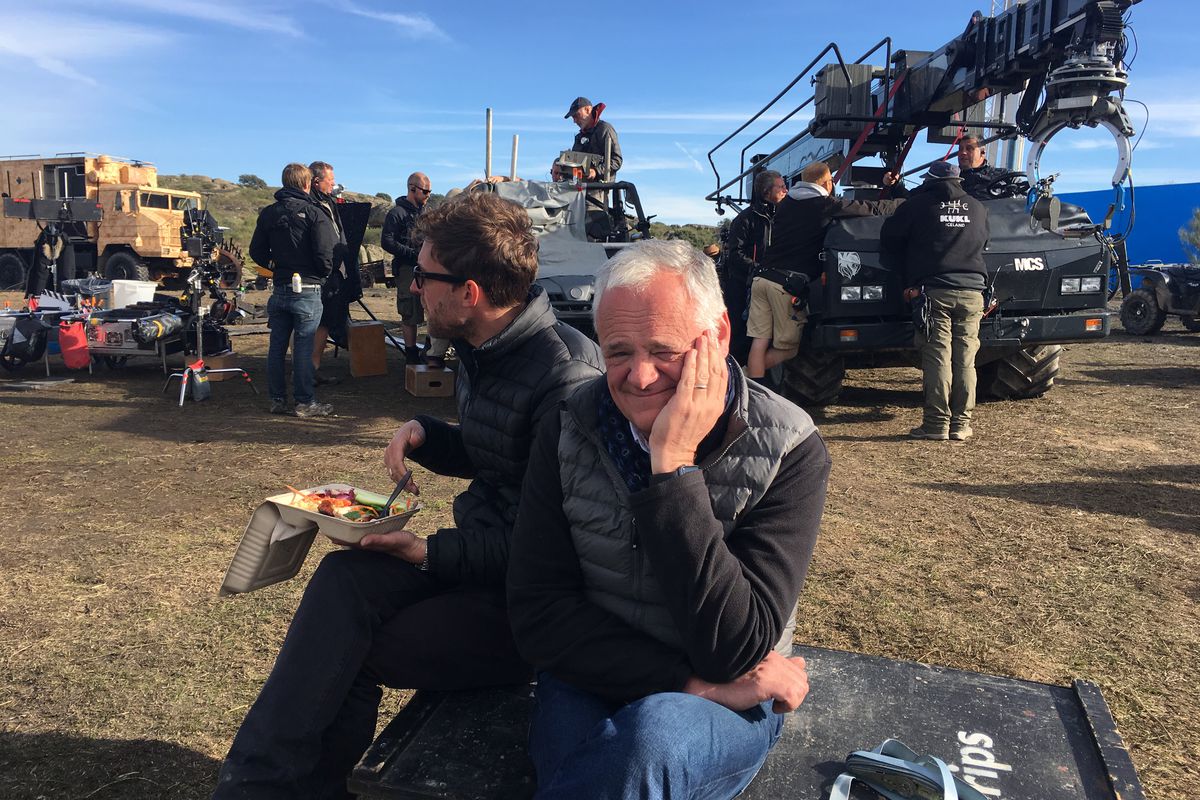A cinematographer has a heavy responsibility. Without a steady hand (no pun intended, trust me) guiding the direction of photography and camerawork, a film or episode of television can be poorly imagined or shot, unraveling all the hard work of a production. The stakes were especially high for the cinematography of “The Spoils of War,” one of the most intense, large-scale episodes of Game Of Thrones in the show’s seven-year history; fortunately, HBO had a veteran presence in cinematographer Robert McLachlan.
“Any sequence with a great deal of visual effects has to be really carefully planned,” said McLachlan, who worked on the Red Wedding in season 3 and “The Dance of Dragons” in season 5, in an article from The Verge. “It almost comes down to planning individual frames as you decide how long each shot is going to be, because those shots are insanely expensive, especially if there’s a dragon in the frame.”
In a series of interviews, McLachlan spoke about the long-range planning involved with most episodes of Thrones, but especially one like “The Spoils of War.” The crew — unlike the cast, who is typically kept in the dark about what will happen until production is well underway — gets scripts more than a year in advance, so planning for the episode began more than a year ago for McLachlan. It’s a necessary aspect of filming a show like Thrones, whose production has so many moving parts.
Despite that and the intricacies of the episode, McLachlan said they tried to film “The Spoils of War” as “simply and elegantly as we could,” using a small, hand-held digital camera called an Osmo that allowed a stuntman riding on horseback to get shots while riding at a full gallop.

Although there were as many as 50-60 stuntmen and horses for the Dothraki charge in “The Spoils of War,” cinematographer Robert McLachlan manipulated footage to make it look like many more.
McLachlan also talked about the balance of practical effects and CGI and how to make less than a hundred Dothraki on horseback look like thousands.
“Well, obviously we didn’t actually have 5,000 Dothraki. But to 3-D animate those would be wildly expensive,” he said. “We did have 50 or 60. And part of the tedious process of doing a scene like that is, you have to do crowd replication. We have cameras that can repeat their moves over and over perfectly, exactly the same way each time, so different segments can be blended together.”
As for the copious amounts of thick, black smoke that filled the sky above the battlefield once Dany and Drogon started raining fire, McLachlan said it wasn’t as simple as setting wooden props on fire. To block out the sun so the shots would look more consistent — and knowing that fire smoke would look “incredibly beautiful” — he turned to burning something a little less, er, conventional.
“Special-effects smoke is usually white, and it’s quite innocuous. It’s easy to work in. It’s been proven safe to breathe. But we wanted really nasty black smoke that would look evil and horrible, and the only way to do that is to burn diesel oil,” he said. “The crew and everybody close to the fires were fitted with masks and goggles. But after two days, everybody’s faces were just black, and we were all coughing and wheezing and hacking. The health and safety officer from HBO said, ‘That’s it! No more of that!’ Everybody was relieved, including me on one level, but on the other level, I was going, ‘Oh man, there goes my smokescreen.’ “
McLachlan also touched on the importance of not only framing the characters in the screen in just the right way, but in enhancing the story that’s being told in that episode through cinematography as a whole. He said the emotional stakes in “The Spoils of War” were different than something like the Battle of the Bastards, where there were clearly defined sides.
“When I first read this episode, I thought ‘Well, here’s Dany flying around on a dragon burning everything up, and Jaime down on the ground, but is that going to work, if we’re not really rooting for somebody?’ Then I realized that the characters actually watching this conflagration, this dragon-induced Armageddon, was going to be a game-changing moment,” McLachlan said. “So we really had to focus on Jaime, and to a lesser extent, Bronn, more than this girl flying around on a dragon, which was technically hard to shoot.”
“Nikolaj [Coster-Waldau, who plays Jaime Lannister] delivered one of his best performances in the show so far,” he added. “I think that’s largely what helped make it work. That, and watching a battle where you’re rooting for both sides. You don’t want to see the dragon get killed, but you don’t want to see Bronn get killed. I think it worked.”
The full article and many more of McLachlan’s thoughts are available here.
The post Cinematographer Robert McLachlan talks about the challenges and processes behind ‘The Spoils of War’ appeared first on Watchers on the Wall.
Via http://watchersonthewall.com


No comments:
Post a Comment